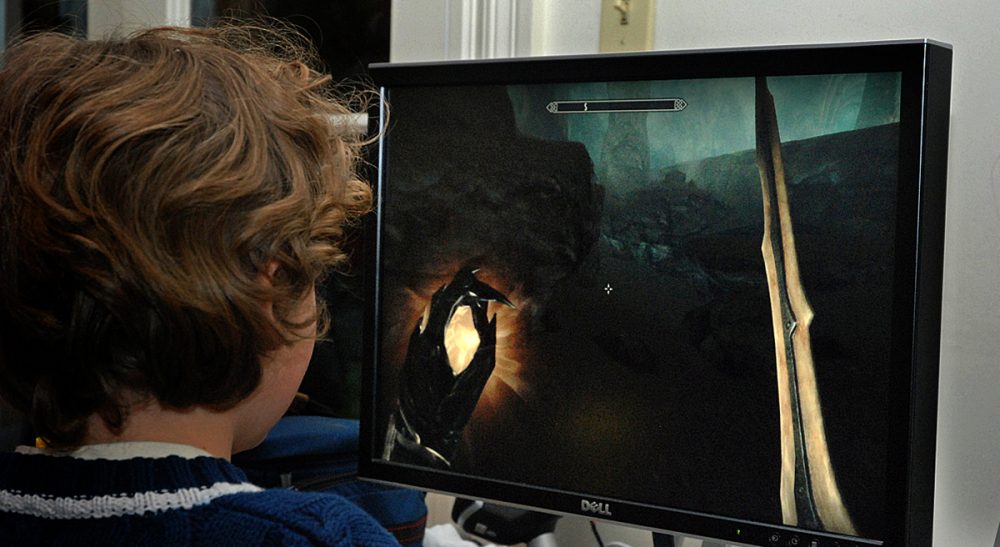Advertisement
In Their Own Private Bubble

At the last gathering of younger and older people I witnessed — and you need to know, I am one of the “older people” — many of the people over 40 were talking together. Many of the younger people — in this case, my nephews and nieces — were not. Each busied him or herself with a device and/or glowing box, either watching a TV show, playing a video game, listening to music on their headphones, or attending to a computer in a different room of the house.
These kids were having singular media, music, video and pop cultural experiences.
And indeed, they have much content to choose from — an overabundance. They can pick and choose from millions of videos, songs, updates, news stories, blogs, memes, all to download, watch, and listen to.
Younger generations have come of age in this era of infinite possibilities. An almost sickening fire hose of data tries to capture their attention. Does this result in a lack of pop cultural common ground?
Alone.
I don’t mean focus just on the kids. I’m guilty of picking my own private media experiences. But rather than rant about the effect this habit might have on our attention spans, or our abilities to engage each other thoughtfully, or to be fully present, I thought of another concern.
Younger generations have come of age in this era of infinite possibilities. An almost sickening fire hose of data tries to capture their attention. Does this result in a lack of pop cultural common ground?
I thought about my media diet, compared to that of my nephews, ages 7 and 11, or other kids now in high school, or college, or in their 20s. In contrast, my peers and I grew up watching the same shows, from Saturday morning cartoons like “The Bugs Bunny/Road Runner Hour” to the same reruns like “Gilligan’s Island” to the same primetime shows like “Fantasy Island.” We had the same dozen or so channels on TV (UHF plus VHF) and one TV to watch them on. We read the same books (“Mrs. Frisby and the Rats of NIMH”) and magazines (“Dynamite”) that the Scholastic Book Club sent to us each month. Your teacher would hand out the catalogs, and like a greedy prisoner you’d check off the titles you wanted that would buy you imaginative freedom.
If we wanted music, we played records in the living room — for the entire family to listen to. If we were lucky, we’d get to listen when no one was around. I had a naughty George Carlin LP I liked to throw on the turntable. Or, there was a clunky pair of headphones that sometimes worked, but of course you were tethered to a 75 pound stereo.
To get our weekly infusion of what was hot in pop music, we listened to the “American Top 40” with Casey Kasem. “School House Rock,” those animated educational short films about grammar and civics, and the hot-topic “ABC Afterschool Special” series, were TV programing as good as any teacher. We all watched them. The shows drilled songs, rules, lessons, and family tragedies into our soft little heads.
Most anyone from my generation who didn't grow up in my same town still had a shared language.
Then came the Walkman, and cable TV, the Internet — and that subsequent wealth of choice, portability, and instantaneousness. You know the rest.
My bringing all this up isn’t meant to be an exercise in extreme nostalgia, nor a grumpy old man’s grumble about how far he walked in the snow to school, or how great things used to be. (Although it’s tempting.)
What will they discuss at cocktail parties 10 or 20 years from now?
Rather, I reflect on what mutual experiences kids talk about now. What will they discuss at cocktail parties 10 or 20 years from now? How will they reminiscence about “that show” or “that song,” or “that thing we did,” when everyone in their fourth grade class wasn’t consuming the same Van Halen tune or “Six Million Dollar Man” episode, or trying to solve the same Rubik’s Cube? What will be the “Creature Double Feature” for the Millennial Generation and post-millennial Generation Z?
I fear there’s no common pop cultural glue that will hold them together.
For sure, despite the thousands of games you can play in ear-budded solitude on your iPhone, there will still be the occasional flash in the pan that will burn brightly enough to attract all us moths. Think of the “Gangnam Style” video, with 1.8 billion YouTube pageviews. Media experiences like Angry Birds, “The Hunger Games,” “Breaking Bad,” or “What Does the Fox Say?” also might rise to the level of long-term, communal reference.
Largely, these media are quick and forgettable. They don’t become pop cultural institutions in our lives. They aren’t the sort of shared experiences around which a generation can cement collective memory.
In other words, I can’t quite imagine my nephews, three decades from now, saying, now what was that video called again, that one about some loopy kid after dental surgery?
Now if you’ll excuse me, this “older person” has some Internet surfing to do.
Related:

